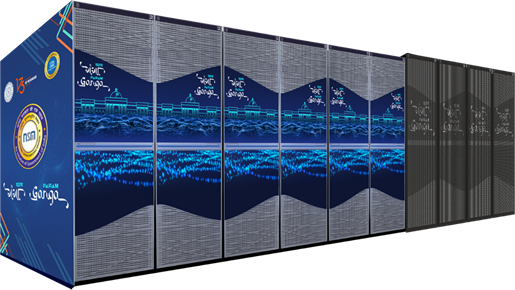Science & Technology
Supercomputer PARAM Ganga: NSM
- 09 Mar 2022
- 5 min read
For Prelims: Param Pravega, Supercomputer, National Supercomputing Mission, National Knowledge Network (NKN).
For Mains: National Supercomputing Mission, IT and Computers, Achievements of Indians in Science & Technology.
Why in News?
The National Supercomputing Mission (NSM) has deployed PARAM Ganga-a High-Performance Computational (HPC) facility at IIT Roorkee, with a supercomputing capacity of 1.66 Petaflops.
- Earlier, the Indian Institute of Science (IISc) Bengaluru installed the supercomputer 'Param Pravega'.
What are the Key Points?
- It has been established by the Centre for Development of Advanced Computing (C-DAC) under the approach of NSM.
- The basic idea behind building a Petascale Supercomputer with manufactured in India components is to lead the path towards Aatmanirbhar Bharat and accelerate the problem-solving capacity in multidisciplinary domains simultaneously.
- It will aid researchers to solve complex problems of national importance and global significance.
- It will serve as an essential computer environment for the modern-day research along with their theoretical and experimental work.
- The focus is to provide computational power to the user community of IIT Roorkee and neighbouring academic institutions.
What is a Supercomputer?
- A supercomputer is a computer that performs at or near the currently highest operational rate for computers.
- Generally, PETAFLOP is a measure of a Supercomputer’s processing speed and can be expressed as a thousand trillion floating point operations per second.
- FLOPS (floating point operations per second) are typically used to measure the performance of a computer’s processor.
- Using floating-point encoding, extremely long numbers can be handled relatively easily.
- Supercomputers are primarily designed to be used in enterprises and organizations that require massive computing power.
- For example: weather forecasting, scientific research, intelligence gathering and analysis, data mining etc.
- Globally, China has the maximum number of supercomputers and maintains the top position in the world, followed by the US, Japan, France, Germany, Netherlands, Ireland and the United Kingdom.
- India’s first supercomputer was PARAM 8000.
- PARAM Shivay, the first supercomputer assembled indigenously, was installed in IIT (BHU), followed by PARAM Shakti, PARAM Brahma, PARAM Yukti, PARAM Sanganak at IIT-Kharagpur, IISER, Pune, JNCASR, Bengaluru and IIT Kanpur respectively.
- In 2020, PARAM Siddhi, the High-Performance Computing-Artificial Intelligence (HPC-AI) supercomputer, achieved global ranking of 62nd in Top 500 most powerful supercomputer systems in the world.
What is the National Supercomputing Mission?
- In 2015, the National Supercomputing Mission was launched to enhance the research capacities and capabilities in the country by connecting them to form a Supercomputing grid, with National Knowledge Network (NKN) as the backbone.
- The NKN project is aimed at establishing a strong and robust Indian network which will be capable of providing secure and reliable connectivity.
- The Mission plans to build and deploy 24 facilities with cumulative compute power of more than 64 Petaflops.
- Till now C-DAC has deployed 11 systems at IISc, IITs, IISER Pune, JNCASR, NABI-Mohali and C-DAC under NSM Phase-1 and Phase-2 with a cumulative compute power of more than 20 Petaflops.
- It supports the government's vision of 'Digital India' and 'Make in India' initiatives.
- The Mission is being jointly steered by the Department of Science and Technology (DST) and the Ministry of Electronics and Information Technology (MeitY).
- It is implemented by the Center for Development of Advanced Computing (C-DAC), Pune, and the IISc, Bengaluru.
- The mission was planned in three phases:
- Phase I looking at assembling supercomputers,
- Phase II looking at manufacturing certain components within the country.
- Phase III where a supercomputer is designed by India.
- An indigenously developed server platform called ‘Rudra’ is being tried out in a pilot system, with an interconnect for inter node communication called Trinetra also having been developed.







